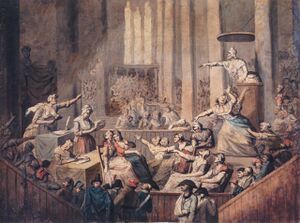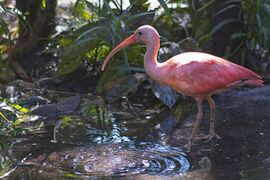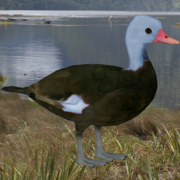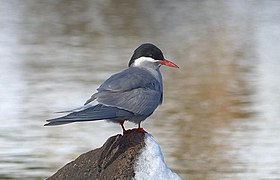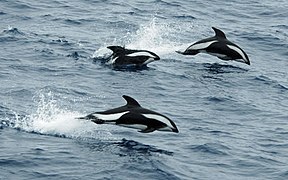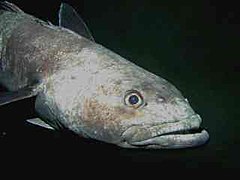Costa Bravo: Difference between revisions
Costa Bravo (talk | contribs) |
Costa Bravo (talk | contribs) |
||
| Line 691: | Line 691: | ||
* 1 May: {{wp|May Day}} | * 1 May: {{wp|May Day}} | ||
* 21 September: [[Student's Day]] | * 21 September: [[Student's Day]] | ||
* 1 November: [[Festival of | * 1 November: [[Festival of Souls]] | ||
* 1 December: [[Field Day]] | * 1 December: [[Field Day]] | ||
== Symbols of Costa Bravo == | == Symbols of Costa Bravo == | ||
Revision as of 16:10, 14 December 2019
This article is incomplete because it is pending further input from participants, or it is a work-in-progress by one author. Please comment on this article's talk page to share your input, comments and questions. Note: To contribute to this article, you may need to seek help from the author(s) of this page. |
Free State of Costa Bravo Estado Libre de Costa Bravo | |
|---|---|
|
Flag | |
| Motto: "Trabajadores, unite!" | |
| Anthem: The Internationale/La Internacional | |
 Location of Costa Bravo (purple) | |
| Capital | Nuevo Puerto Hércules |
| Official languages | None |
Local languages | a la brava |
| Ethnic groups (2019) | 29.0% European 18.6% South Asian 16.0% African 10.9% Asian 9.6% Polynesian 8.9% West Asian 7.0% other |
| Religion (2019) | 33.1% Liberational Catholicism 20.8% Buddhism 13.0% Hinduism 10.4% Islam 9.9% Quakerism 7.6% Judaism 5.3% other |
| Demonym(s) | Bravo |
| Government | Democratic confederalism (Devolved council democracy government on a confederated model with syndicalist traditions) |
| Stages of sovereignty | |
• Discovery by Europeans | 1522 |
• Colonization by Spain | 1580 |
• Ceded to Great Britain | 1714 |
• Independence | 1812 |
• Abolition of the directory system | 1991 |
| Area | |
• Total | 199,052 km2 (76,854 sq mi) |
• Water (%) | 6.9 |
| Population | |
• 2019 census | 5,001,250 (+300,000 resident aliens) |
• Density | 25/km2 (64.7/sq mi) |
| GDP (PPP) | estimate |
• Total | ƒ80 trillion |
• Per capita | ƒ548,210 |
| GDP (nominal) | estimate |
• Total | ƒ70 trillion |
• Per capita | ƒ359,340 |
| Gini | low |
| HDI | very high |
| Currency | Costa Bravo Florín (ƒ) (FLO) |
| Time zone | UTC+3:00 (UTC) |
| Date format | dd-mm-yyyy |
| Driving side | right |
| Calling code | +666 |
| Internet TLD | .cb |
Costa Bravo, officially the Free State of Costa Bravo or Estado Libre de Costa Bravo, is a confederal democracy located on a chain of islands spanning the South Atlantic and Southern Indian Ocean. Costa Bravo was formerly a colonial subject of Spain and Great Britain. It declared independence from Britain in 1812. The current form of government dates to 1991 following a period of civil war.
Costa Bravo is governed from the 'bottom-up'. Every community, ethnicity, culture, religious group, intellectual movement, and economic unit is autonomously organized as a political entity. All issues of daily life are decided on by the members of these organizations in consensus decision-making and direct democracy. Issues are put to the vote in an endless stream of referendums. This political apparatus is highly digital: votes are cast by citizens 'on the go' with their personal smart devices and computers. Political participation and voting are mandatory for all citizens. There is no head of state, but a 'Representative' may be provisionally appointed to conduct diplomacy on the people’s behalf (for example).
There is no official language. Media and daily conversations are in code-switched English and Spanish. This vernacular is called a la brava, or Bravo Spanglish.
The islands that are now part of Costa Bravo were colonized by Austronesian peoples between 500 to 1200 CE. Austronesian settlement lasted less than a century. Europeans independently discovered the islands on 1 April, 1522, when during the first circumnavigation of the world the Victoria was forced to shelter on Costa Bravo after being lost in a storm. The islands were claimed by Spain and colonization began in 1580.
Costa Bravo is the most remote nation in the world. In the 20th century, Costa Bravo played an outsize role in the Cold War as one of the leaders of the Third-World movement, a coalition of non-aligned countries in the Global South. By the end of the Cold War, Costa Bravo ranked as one of the most developed countries in the world, but to this day remains in the political sphere of developing countries.
Etymology
The name "Costa Bravo" is a corruption of the original name, which dates from the Spanish discovery of the archipelago during the first circumnavigation of the world. Noting the tumultuous waters and rocky coastline of the region's many islands, crewmember of the Victoria Antonio Pigafetta dubbed the place Costa Brava, Spanish for "furious coast". The name first appeared in Maximilianus Transylvanus's De Moluccis Insulis. The shift from Brava to Bravo occurred shortly after the British takeover in 1714, when the evolved form began began appearing in administration records. The original name continued in vernacular use until the early 19th century.
In 16th century Latin language accounts, the name is given as Ora Pravo, meaning "crooked coast" or "wicked coast".
Inhabitants of Costa Bravo are known as Bravoes.
History
Prehistory
The history of Costa Bravo prior to European discovery of the islands is imprecise on account of scarce archaeological remains. Estimated dates of initial settlement range from 500 to 1200 CE, approximately coinciding with the arrival of the first Austronesian peoples in Madagascar. These settlers came from Melanesia and Micronesia. The population size and specific cultural identities of the settlers are not precisely known. Only fragmentary skeletal and material remains have been uncovered. It is believed that settlement lasted for a few generations before collapse. Disease, political strife, or climate events have been hypothesized as the cause.
The Austronesian settlers are best known as the creators of the Satan Stone or Piedra de Satanás, a 3 meter tall oblate ovoid monolith carved from a silicate mineral meteorite. The stone was unearthed by farmers in the southern part of the main island in 1852. It has been on display at the People's Museum since 1900. The manner of its construction, its provenance, and the meaning of the glyphs covering its surface are all unknown. The glyphs are rendered in boustrophedonic text but resemble no other writing system in the world. None of the text is definitively understood. Some modern linguists argue it is not true writing but proto-writing, or even a more limited mnemonic device for genealogy, choreography, navigation, astronomy, or agriculture. There is continuing debate as to whether the glyphs are essentially logographic or syllabic, though they appear to be compatible with neither a pure logography nor a pure syllabary. The study of these glyphs, and the purpose of the Satan Stone itself, remains contentious to this day. The perception of the monolith as an object of Satanic power led to it almost being destroyed on two separate occasions in the 18th and 19th centuries.
European colonization
The islands were rediscovered on 1 April, 1522 by Juan Sebastián Elcano and the crew of the Victoria who completed the first circumnavigation of the world. In late March of 1522, the Victoria encountered a cyclone in the South Indian Ocean, which sent the ship into waters far to the south of her intended route. The crew chanced upon the archipelago now known as Costa Bravo, and there sheltered and provisioned for food and water. They remained on the islands from 1 April to 4 April 1522. The Venetian scholar Antonio Pigafetta wrote extensively of the wildlife and terrain of the islands. In his journal, Pigafetta christened the place Costa Brava and noted its approximate location. The Victoria arrived in Spain five months later.
Spain immediately laid claim to the islands, in contravention of the 1494 Treaty of Tordesillas which made the islands de jure Portuguese possessions. There were several failed ventures to colonize Costa Brava beginning as early as 1523. Only one such venture was undertaken prior to 1580, in which a flotilla of ships sailed from Seville in 1535 but failed to locate the islands.
The union of the Portuguese and Spanish crowns in 1580 revived colonization efforts, still to the exclusion of Portuguese interests, and a colonizing expedition landed on Costa Brava on 8 December, 1580. The colonists founded a small village on the east coast of the main island. This settlement was named Nuevo Puerto Hércules (after Port Hercules, Monaco) in honor of Isabella Grimaldi, Lady of Monaco with whom the expedition leader Ignacio de Zárate was infatuated. Zárate had volunteered for the expedition to escape a death sentence for invading the Lady's bedchambers six months prior. A collection of love letters written by Zárate exhorting the Lady of Monaco to marry him and travel to Costa Brava—an impoverished, malarial backwater—are today on display in the People's Museum.
Costa Brava encompassed an administrative unit consisting of all of Spain's possessions in the South Atlantic and Southern Indian Ocean. Costa Brava itself was organized as a captaincy and audiencia of the Viceroyalty of Peru. Although nominally no different than his peers, the Captain General of Costa Brava had significant autonomy similar to the Captain General of Santo Domingo.
One of the most notable leaders of Costa Brava, Captain General Nicolás Benalcazar, is today celebrated as a picaresque Robin Hood-type folk hero. His privateer fleet in the 1610s commerce raided British triangular trade ships. Benalcazar and his privateers were subject to censure from Spanish authorities considering the extralegal nature of Benalcazar's letters of marque. This caused a rift between Costa Brava and the Crown, ultimately leading to a strong culture of privateering on the islands that the viceregal government could do nothing to prevent. Benalcazar was stripped of office in 1617, after which he became a successful pirate. The Golden Age of Piracy was a high watermark in the early cultural history of Costa Brava. Costa Brava became a byword of a place of debauchery and murder. The "Cold Caribbean" was a moniker frequently applied to the islands. Located at the southern apex of the Pirate Round, Costa Brava was increasingly subject to the influences of cosmopolitan traders and pirates—and increasingly estranged from the Spanish metropole.
The War of the Spanish Succession in the early 18th century was the first global conflict to directly involve Brava territories. Cognizant of a widening cultural gulf between the islands and mainland Europe, naval forces in Costa Brava mutinied rather than support the Spanish war effort. Costa Brava was chaotic in the early years of the war. The disorganized population of pirates attacked ports, ships, and each other across the South American, African, and Brava coasts. Nuevo Puerto Hércules exchanged hands between the Captain General and the independent factions three times before an expeditionary force of viceregal ships sufficiently put an end to the naval rebellion. From 1705 until the end of the war, Costa Brava experienced only intermittent pirate activity.
The war was devastating to Costa Brava's economy. Raids had destroyed infrastructure in and around Nuevo Puerto Hércules. After the war, the port could sustain only half the number of anchored ships as it could previously. This setback diverted a significant amount of trade to ports in South America and Africa. The transient population of privateers, disenfranchised sailors, and pirates went elsewhere. Costa Brava lost a full third of its population.
Spain ceded Costa Brava to Great Britain as part of the Peace of Utrecht. Costa Brava became the British Bravo Islands.
Whaling came to predominate the economy under the British. During Spanish rule, whaling had been confined to marginal Basque communities on the islands. By 1800, Nuevo Puerto Hércules was regarded as the whaling capital of the world along with Nantucket. The abundant lesser rorqual was—and remains—a staple catch. Bravo whalers of this period were possibly the first people to make landfall on Antarctica. Recent archaeological findings have uncovered whaling stations in the vicinity of Prydz Bay which may date as early as c. 1750.
In March 1740, the British Bravo Islands were subject to the only land-based offensive by Spanish forces during the War of Jenkins' Ear. A band of porteño privateers from Buenos Aires landed on Isla Roché y Las Últimas, seizing control of the islands. Porteño merchants and contrabandistas hoped to create an additional trade route outside of the closed port of Buenos Aires. The islands became a base of operations for Spanish privateers attacking the triangular trade route. By 1743, with the war subsumed by the War of the Austrian Succession, locals in Hueco revolted and reclaimed the islands for the British.
The remainder of the 18th century was peaceful and saw the total syncretization of Anglo and Hispanic culture.
British relations with their Bravo subjects soured following the outbreak of the Napoleonic Wars in 1803. To sustain manpower for the war effort, the British Royal Navy relied heavily on impressment from two main sources, American and Bravo sailors. Both populations had large numbers of career sailors and commercial fleets. Between 1806 and 1812, 6,000 American seamen and an estimated 20,000 Bravo seamen were impressed and taken against their will into the Royal Navy.
Bravo women comprised over half of local whalers during this period, as there was a shortage of men remaining to do the work. Bravo whaler Leonora Toro retaliated against the British Navy by disguising herself and her crew as men and killing any officers who tried to pressgang them. In her most famous naval action dubbed the Fuego affair, she destroyed the HMS Spitcock with a fire ship, killing 20 British sailors. Leonora Toro was arrested in 1811 and executed along with 8 other women who participated in the affair (the remaining 20 crewmembers successfully pled the belly). Impressment subsequently doubled; even some women sailors were pressganged along with the men.
By 1812, sentiment in the British Bravo Islands had reached a critical low point. On 1 April, 1812, an uprising of women and young men stormed the Governor's Hall in Nuevo Puerto Hércules and presented a Bill of Redress or Carta de Reparación to Deputy Governor Gilbertine Rawls. Their demands were plainly refused. Scattered fighting erupted across the British Bravo Islands. Judging correctly that British forces were stretched too thin to suppress an uprising in the most remote settlement in the world, revolters unseated British authorities from power on every island within six months. The movement was originally a call for redress, not independence, but rapid gains shifted war goals.
A notable engagement was the Battle of Jauja in which 250 children attacked the British fort at Jauja and took captive the entire garrison. The islands of Zeda and Ye had been severely depopulated of working adults by impressment and the ongoing whaling season. Almost the entire revolutionary forces on the islands were below the age of majority. The children of Jauja enslaved the British soldiers and declared a Children's Republic. On 11 August, the army of the Children's Republic of Zeda launched an amphibious invasion of nearby British-controlled Ye. Fierce urban fighting in Dar es Coba lasted for three days and nights before the British surrendered. The Children's Republic of Zeda-Ye lasted until war's end, when it became a part of the newly formed Free Bravo Islands.
In February of 1813 the Bravo forces (leaderless and almost two-thirds women) agreed to free 600 British captives in exchange for autonomy from British rule. The Bravo Revolution lasted 10 months. It left 800 Bravoes dead, 300 British dead, and 20 British ships sunk to Bravo 4. Some 4,000 people died from disease. When the Napoleonic Wars ended in 1814, many pressganged Bravoes finally returned home.
The Free Bravo Islands (1812-1933)
A series of hasty, chaotic congresses were held in the aftermath of the peace agreement with the goal of determining the kind of government that should be formed. Important national-level congresses included the Congreso de Niños (Jauja), the Congreso Occidental-Central (Hueco), the Herculean Congress (Nuevo Puerto Hércules), and the Congreso de Mujeres y Viudas Afligadas (Zeta Fe).
The people established a directory form of government and named it the Free Bravo Islands. Rather than a single executive, the government was headed by a five-member council of elected representatives. It was partially based on the French Directory of 1795-1799. The Directory was invested with executive and legislative power; there was a separate judiciary headed by an elected Judge President or Presidente Juez.
The first several decades of Free Bravo history were characterized by impoverished conditions and a struggle for self-sufficiency. A reliance on trade goods caused persistent food shortages as British ships raided Bravo commerce lanes. Modest trade in grain with the United States of America and France sustained the population in the face of agitation from the Capullist faction, a clique of liberal politicians who promoted reunification with Great Britain. The United States were the first to recognize Free Bravo sovereignty in 1817. France recognized Free Bravo in 1818, followed by the same from independent South American republics throughout the 1820s.
The Famine of 1821 or Hambruna de los Comeflores caused inhabitants of hard-hit islands such as the Islas de la Cruz to eat flowers, bulbs, and seeds.
Whaling became the sole healthy sector of Free Bravo's economy. A recent study has shown that two-thirds of the diet of Bravo citizens from 1813-1850 was whale. The Bravo government nationalized the whaling industry in 1818. A portion of the annual catch was exported, with the remaining surplus distributed evenly by Bravo navy ships to the people of the islands. The agricultural sector was mature enough in 1852 that whaling was denationalized and whale food programs ended. This period's effect on the culinary culture of Costa Bravo was immense. Most Costa Bravo cookbooks today are about half whale-based recipes.
The 19th century was a peaceful period known as Pax Bravo. The islands were so remote, transport so slow, and the Bravo military so small that no wars reached Free Bravo, nor could Bravo forces extend elsewhere. Pax Bravo lasted 111 years from 1813 to 1924. Bravo soldiers were deployed only once in this time, to quell an 1848 whaler rebellion in Zeta Fe.
The Directory governments of 1878-1883 (Alfaro-Brown-del Canto-Marzán-Quigley) and 1893-1898 (de Juancho-de Váez-Palacio-Quizarro-Weedy) oversaw widespread and rapid industrialization. Railways were built on islands large enough to require them. Domestic steamship passenger routes were established, vastly increasing the speed of inter-island transport. Industry was mechanized; a quarter of the workforce moved from agrarian to urban factory sectors. Free Bravo at the end of the century had the economic output of a marginal European state. An influx of foreign capital made it possible to modernize the military and expand urban centers.
Free Bravo was a declared neutral during World War I. British and German commercial fleets fought an antipodean trade war in Bravo ports—outbidding one another in purchases of fish and copper ore, ramming one another, and in three instances raiding Bravo warehouses and destroying stores to prevent the other nation from receiving them. In December 1916, the Directory (Bengoa-de Gordon-Madstone-Morón-Pinker) barred both nations from Bravo ports until the war's end. When Britain contrived for the Entente Powers to cease grain trade with Free Bravo, the Directory relented and allowed British ships to return. German ships subsequently sank 7 Bravo fishing ships in the North Atlantic, killing 23 sailors.
Tensions had long been simmering between Argentina and Free Bravo over claims to Isla Roché y Las Últimas. When Argentina won independence from Spain in 1816, it declared as part of its territories the Islas Malvinas, Isla Roché, and Las Últimas. The Argentine government claimed that the islands had never been ceded by Spain to Great Britain, and were Spanish territories at the time of Argentine independence. The Peace and Friendship Treaty of Utrecht between Spain and Great Britain from 1713 says in Article XII:
- "Yet further the Catholic King doth in like manner for himself, his heirs and successors, yield to the crown of Great Britain the whole island of Costa Brava, and doth transfer thereunto for ever, all right, and the most absolute dominion over the said island, and in particular over the ports, places, and towns situated in the aforesaid island, and on all surrounding islands so belonging to the Captaincy General named Costa Brava."
The Argentine position is that Isla Roché y Las Últimas are so distant from “the aforesaid island” that they cannot rightfully be considered one of “all surrounding islands”. As a result, it was never ceded by Spain to Great Britain. The Nootka Sound Conventions in 1790 further complicated matters, granting Spain and Great Britain equal rights to construct temporary settlements on the islands for fishery-related purposes (e.g. shelters and processing stations), provided that no non-Spanish or non-British party did otherwise. (Existing permanent settlements from either party were permitted.) The Argentines argued that post-independence Free Bravo settlements on Isla Roché y Las Últimas constituted a third-party trespass that invoked Argentina's right to settle the islands. Lastly, Argentina deemed porteño occupation in the years 1740-1743 a legitimate government which formed a continuum with modern Argentina. Most South American countries have historically recognized the Argentine claim. The Argentine claim was codified in the Constitution of Argentina in 1994. Today, China and all South American countries support Argentina except Chile and Venezuela (Bolivia switched positions to support Argentina following the right-wing coup in 2019). Bravo jurists view the Argentine claim as "self-contradictory and misleading", in particular its basis in the muddled language of the Nootka Sound Conventions.
Asserting Argentine sovereignty, President Marcelo Torcuato de Alvear authorized a declaration of war on Free Bravo and the United Kingdom and invaded Islas Malvinas, Isla Roché, and Las Últimas on 10 October, 1924. This was the first action of the Air Wars.
The Atlantic Fleet of the United Kingdom immediately sailed for the South Atlantic with Admiral Sir Henry Oliver on the flagship HMS Revenge. A brief series of naval engagements crippled Argentina's navy—all but two Argentine ships had been constructed in the previous century. Argentina withdrew from Islas Malvinas and the United Kingdom left the war on 8 December, 1924. The Directory (Abasta-de Gordon-Madstone-Pousey-Venegas) unsuccessfully sued the government of the United Kingdom to remain in the war and assist the Free Bravo forces.
Despite losing much of their naval capabilities, Argentina was able to retain control of Isla Roché y Las Últimas. A counterinvasion by the Free Bravo Navy on 14 December was repelled in a Pyrrhic victory for Argentina that rendered both navies basically inoperable for over a year. Successive naval battles resulted in similar stalemates: the Battle of Isla Errante on 12 January, 1926 and Battle of Hueco on 28 October, 1926 had no definite victors.
The occupied islands were organized as the Autoridad Provisional de las Islas Argentinas, a transitional wartime province of Argentina.
Guerrilla resistance on the islands was coordinated by telegraph from Nuevo Puerto Hercúles. Argentine anarchists were supported with paramilitary training by the Free Bravo military. Severino Di Giovanni, one such anarchist, led a bombing campaign in Buenos Aires during the war. Free Bravo additionally drafted and commissioned all pilots within its borders as paramilitary pilots, enlisted international volunteer pilots, requisitioned mechanized factories such as automobile and shipbuilding factories to convert civilian aircraft into fighters and bomber planes, and converted whaling vessels into a flotilla of seaplane tenders. This began the period of the Air Wars dominated by the so-called Air Corsairs.
Originally conceived as a way to preserve the valuable personnel and materiel of the fledgling Free Bravo Air Force, the paramilitary Air Brigades took their Bravo funding and equipment and split into an array of rogue factions led by warlords. This included Rocheño and Ultimano guerrilla factions. A coalition of factions by air, land, and sea toppled the Autoridad Provisional in a campaign between February and June 1927. Rather than returning the islands to Free Bravo, they declared themselves a confederation of sovereign communes, the Territorios Libres. Fighting soon erupted between Argentine-aligned, Bravo-aligned, and non-aligned factions of the islands. The air forces of Free Bravo and Argentina entered the conflict directly in December 1927. A system of "alignment politics" prevented any one faction from gaining the upper hand: when one faction started to become too powerful, the rest would ally to stop them, then turn on each other.
Bravo-aligned communist factions grew more ascendant towards the end of the Air Wars. Sol Fuerte and Ruy Octavio Picado, two communist warlords, were vaunted as heroes throughout Free Bravo as they made sweeping territory gains and raided the Argentina mainland.
This coincided with the Great Depression which hit Free Bravo beginning in 1930. Slowdown of global trade and a precipitous fall in export prices caused total value of exports to decrease from ƒ700 million to ƒ330 million between 1930 and 1933. This was not to rise again to pre-1930 levels until 1938. Unemployment in 1932 was as high as 20%. This led to social unrest which coincided with agitation from universal suffragists and advocates of political reform. The Directory (de Gordon-de Haro-Gil-Madstone-Singh) was extremely unpopular with approval at 13%, largely due to their inability to rectify economic conditions and resolve the Air Wars. There was a broader social disillusionment with the capitalist, oligarchic overclass which was over-represented in government.
In early 1933, the Fuerte-Picado faction drove the Argentine remnants from Refugio, consolidating Bravo-aligned control over Isla Roché y Las Últimas. The Fuerte-Picadoes formed a Soviet-style directory government in Hueco. A peace accord between Argentina and the Fuerte-Picado government was signed on 30 March. Diplomatic overtures for reunification with Free Bravo were made, on the condition that the Hueco and Nuevo Puerto Hercúles directories were merged into a coalition national government. This happened on 9 September, 1933. The Directory (de Gordon-de Haro-Fuerte-Gil-Madstone-Picado-Singh) grew to 7 members.
Concessions from the original Directory members towards the more radical Fuerte and Picado were slow to proceed. A snap election was contrived by Fuerte-Picado for 25 November, whose faction won an overwhelming victory, populating the new directory wholly with heroes of the Air Wars and other communists. The Directory (Akhtar-Badham-de la Torre-Fuerte-Picado-Sarkar-Xemen) immediately prorogued the government, abolished the constitution, and proclaimed the Armed Republic of Costa Bravo, a socialist state.
The Armed Republic of Costa Bravo (1933-1991)
- The Directory completely reorganizes governmental structures.
- Sweeping agricultural and ownership reforms. The estates of the 100 largest landowners were confiscated and those in the country were exiled. (The majority of landowners were absentee, residing in foreign countries.) About three-fourths of land is redistributed.
- Introduction of a Stalinist centrally planned economy.
- Pillar of the Third-World movement. Support for revolutionary movements throughout the world, from Black Panthers to Angola.
- Acceptance of Jewish refugees in 1930s and 40s. Participation in World War II.
- The Antarctic War, or the War at the Bottom of the World, fought 1960-1961 over land claims to Antarctica. Chile and Argentina backed by USA versus Costa Bravo backed by USSR.
- Over the decades, the directory grows from 7 members, to 9, to 11, and finally to 13.
- A depression in the 1970s set the stage for a workers' syndicalist revolution 1985-1991.
The Free State of Costa Bravo (1991-present)
Governance
Costa Bravo is divided into 4 sea cantons: Big Canton, North Canton, Central Canton, and West Canton.
| Island | Capital | Sea canton | Postal code | Total pop. | Notes |
|---|---|---|---|---|---|
| Isla Grande | Nuevo Puerto Hércules | Big | GRA | Simply referred to as the main island. Other cities include San Electrón. | |
| Isla Glande | Atroz Aires | Big | GLA | ||
| El Haz de Luz | El Haz de Luz | Big | HAZ | ||
| Miranda | Zeta Fe | Big | MIR | Other settlements include Turdueles. | |
| Ramita del Mar | La Salinidad | Big | RAM | ||
| Perdido | Santa Bondad | Big | PER | ||
| Antiguo | Espartaco | Big | ANT | ||
| Heladino | Paragüero | Big | HEL | ||
| Nueva Ymana del Sur | Contranorte | Big | YMA | ||
| Puerco Roco | Bombavista | Central | PUE | One of the Islas de la Cruz. | |
| Tierra del Huevo | San Barto | Central | HUE | One of the Islas de la Cruz. | |
| Posesión | Buenas Nuevas | Central | POS | One of the Islas de la Cruz. | |
| Donación | El Morado | Central | DON | One of the Islas de la Cruz. | |
| Islotes de Satanazes | None | Central | None | A group of small rocky islands near the Islas de la Cruz. | |
| Costaguana | Cargoburgo | Central | COS | ||
| Ronagua | Ultra Marino | Central | RON | ||
| Isla Errante | None | Central | ERR | ||
| Isla Roché | Hueco | West | ROC | The second largest island. Other settlements include Baja Haya and Plebezuela. | |
| Poco Rojo | None | West | POC | ||
| Última Tule | Las Adelfas | West | TUL | One of Las Últimas. | |
| Última Medio | Cobreville | West | MED | One of Las Últimas. | |
| Última Populania | Gran Gracos | West | POP | One of Las Últimas. | |
| Última Florea | Florinata | West | FLO | One of Las Últimas. | |
| Última Gota | Yerba Buena | West | GOT | One of Las Últimas. | |
| Última Colonia | Colonia | West | COL | One of Las Últimas. | |
| Refugio | Nuevo Viejo | West | REF | ||
| Isla Sano | Villa Libre | West | SAN | ||
| Isla de la Plaga | Lazaretta | West | PLA | ||
| Ye | Dar es Coba | North | YED | ||
| Zeda | Jauja | North | ZED |
The postal code format in Costa Bravo is a three-letter island prefix followed by a one to seven-character alphanumeric geohash (e.g. the People's Museum in Nuevo Puerto Hércules has a postal code of GRA-PKK69). Postal workers can convert codes into geographic coordinates with a precision of up to 1 meter squared for seven-character hashes. Buildings retain named streets and numbered addresses for everyday use. Post that is addressed by street and building number is accepted, but may take longer to reach its destination than the efficient hashed system. Posta Bravo, the national postal service, has its central administration and main facility in Cargoburg.
Foreign relations
Costa Bravo is a non-member observer of the United Nations and a non-member of the British Commonwealth.
Military
The military of Costa Bravo is composed of a network of government-equipped militias in localities throughout the country. These militias exist under the aegis of the Self-Defense Forces or Fuerzas de Autodefensa (SDFOR). The military is intended to protect the home territories against invasion and has no capability to deploy elsewhere in the world. The Bravo military is the last in the world to still have a zouaves contingent. Once an elite strike team built for precision operations worldwide, the Bravo zouaves or los zuavos are today an honor guard.
Environment
Costa Bravo is located in and around the subantarctic zone. Warm winds delivered by the Indian Ocean gyre and the South Atlantic gyre create a temperate oceanic climate on many islands. Smaller outlying islands are subarctic. All parts of the nation experience mild to cool summers, with windy and wet winters. Precipitation is constant throughout the year. There is a Bravo joke—Question: "¿Estamos en primavera/verano/otoño/invierno?" Answer: "It is drizzling."
The biome on larger islands is laurisilvan, i.e. subtropical humid forest. Subarctic and outlying islands are windswept, scrubby, boreal biomes, with dense low-lying tree cover such as Island Cape myrtle on Zeda. The majority of islands are potentially active volcanoes. Costa Bravo has not experienced a sizable eruption anywhere since 1974.
Flora & fauna
There are several endemic species in Costa Bravo. The dagger-toothed or dagadiente cat (Felis bravis) is a national symbol. It was introduced by Austronesian settlers in the first millennium or early second millennium CE. It has the longest canine teeth of any living feline (hence its name) and a puffy banded tail. The giant stilt-owl (Grallistrix vomitus) is a 1 meter tall flightless terrestrial owl, the only extant species of its kind. The giant stilt-owl is a nocturnal predator, feeding on small birds and mammals on the forest floor. It is preyed upon in turn by the dagger-toothed cat. Its primary defense mechanism is vomiting up a foul mixture of stomach contents and blood before running away at high speeds. The endangered pink ibis (Threskiornis rosaceae) is a solitary bird with small populations on Isla Grande and the Islas de la Cruz. It is an awkward flier loathe to travel long distances. The blue-headed wigeon (Mareca mirabila) is a small flightless duck related to the extinct Zeda wigeon. The Bravo shag (Leucocarbo verrucosus) is a cormorant with protected colony nests on islands in Big Canton. The giant crab-eating rat (Rattus carceris) is descended from shipwrecked rats in the 16th and 17th centuries. It lives on scrubby beaches and eats crabs, molluscs, and fish, being able to swim some distances in open ocean. Its water-repelling shaggy fur keeps it warm and dry. The Bravissimo pipit (Anthus antarcticus) is a sparrow-sized songbird.
Costa Bravo is an important mating site for several dozen species, including albatrosses, terns, penguins, and seals. The surrounding waters are home to numerous fish and cetaceans, such as the skunk dolphin and southern minke whale.
- Stilt-owl2.png
Giant stilt-owl
Economy
Costa Bravo has an advanced social economy in which production, ownership, and sale of products belongs to the entirety of the population who make collective decisions concerning the dispensation of goods. The primary goal of the social economy is to provide general welfare for the people and funding for the arts and sciences. Individualist accumulation of capital is prevented by direct planning.
Production in all industries is controlled by cooperatives. These cooperatives may range from just a few people to a nationwide organization of tens of thousands of workers. Cooperatives are managed collectively with one vote per member. The profit of a cooperative is split three ways: the first part is spent on planned production and future projects (usually 30%), the second part is divided between the workers according to their needs and expended efforts (usually 50%), and the third part is spent on the immediate needs of the members: healthcare, education, electricity, water, infrastructure, etc. (usually 20%). The exact proportions vary by cooperative. This collective economy is in contrast with a capitalist system, in which a worker's profits are taken by an individual or a few individuals and then returned in a small portion back to the worker as wages. There is no stock market in Costa Bravo.
As of 2017, the nation is ranked 7th in the world on the Human Development Index and is ranked 1st in the world for income equality. The currency is the Costa Bravo Florín (FLO).
Uranium and thorium mining is the largest single sector of the economy, with Costa Bravo possessing the second-largest world thorium reserves behind India. Thorium-powered nuclear power plants provide almost two-thirds of the energy needs of the nation. Agricultural exports in the form of flowers and flower-based products make up the other primary sector of the economy. Flower products including perfumes comprise 46% of all exports. Costa Bravo provides one-third of the world's total flower products, an amount equal to the Netherlands. Food-based agriculture is generally oriented towards self-sufficiency rather than surplus for export, with the notable exception of tea production.
Historically, whaling has been the largest sector of the economy. However, following the International Whaling Commission's ban on the international trade of whale products in 1982, the whaling industry in Costa Bravo has shrunk considerably. The creation of the Southern Ocean Whale Sanctuary in 1994 led to diplomatic and trade sanctions, as Bravo whalers continued harvesting from those waters. Two nationwide referendums in 1999 and 2006 proposing a domestic ban on whaling were defeated by slim majorities. The IWC has accused Costa Bravo of participating in illegal international trade of whale parts with Iceland and Japan.
Transport
Costa Bravo possesses the most extensive undersea transport network in the world. Isla Grande is connected by undersea railway tunnels to Isla Glande, El Haz de Luz, Miranda, and Antiguo. The island chains of Islas de la Cruz and Las Últimas are connected by undersea railway tunnels as well. High-speed ferries have routes between all islands, with most craft in the ferry fleet boasting speeds between 60-80 knots, the fastest HSC ferries in the world. Passenger seajets (also known as flying boats or hidrocanoas) fly domestically on 15 different routes. All public transport is free for residents of Costa Bravo, including domestic seajet flights.
Personal automobiles have been banned in Costa Bravo since 1991. Community motor pools provide publicly-owned cars, trucks, motorized scooters, and motorcycles, with a limit on the number allowed per municipality. Organizations such as cooperatives may own their own automobiles for work purposes. Buses and emergency service vehicles are also fully utilized. Cycling has a modal share of 52% of all trips nationwide, followed by public transit at 45%. Cycling infrastructure based on the Dutch model is highly funded and state-of-the-art on all islands—for each kilometer of roadway, there exists three times as much of protected cycleways.
Culture
Demographics
Media
In the early history of Costa Bravo, pamphleteering by underground printing presses was epidemic. Today, there are hundreds of newspapers and magazines across Costa Bravo of varying circulation sizes and professionalism. Some wide-circulation publications focus on global issues while others relate only the current events of a single city neighborhood. Many political organizations publish their own newspaper. As is the case with all media in Costa Bravo, news publications switch freely between English and Spanish on the same page.
The Signal is the most circulated newspaper, focusing on all issues national, subnational, and international. The All-Bravo focuses on Bravo affairs. Other newspapers include The Common Voice, The People's Tribune, and Los Plebedades or The Screamin' Plebeian.
Sea People's Pirate Radio (SPPR) is the most popular news radio station. It was established in the 1970s as a pirate radio music station. During the Civil War, it broadcast updates from the revolutionary struggle when news was suppressed by the government. Its news journalism became its primary focus after the war. SPPR programs are still transmitted from an offshore platform in international waters.
Television stations are public access and do not require a license. As with publications, there is a proliferation of televised networks from the local to the national level. The nationwide Bravo People’s Network (BPN) is the most-watched station. The longest-running Bravo television show is Secrets of the Stone, a half-hour Saturday morning documentary program about the Satan Stone in which experts and amateurs present their theories concerning its purpose, the meaning of its glyphs, and so forth. Secrets of the Stone has aired about 3500 episodes on BPN since 1957.
Sports
The three most popular sports are rugby 7s, hurling, and a theatrical form of populist ‘street tennis’ called tenis libre or freestyle tennis in which the tenista (tennis player) resembles a luchador. Baseball and soccer are widely enjoyed at a nonprofessional level.
Costa Bravo has no National Olympic Committee, although it has produced a number of Olympic and Paralympic champions. All Bravo athletes compete as Independent Olympians under the Olympic Flag.
| Team | Established | City | Titles (Last) |
|---|---|---|---|
| Alley Cats | 1910 | Nuevo Puerto Hércules | 13 (2009) |
| Boom | 1981 | El Haz de Luz | 2 (1984) |
| Enzymes | 1949 | Las Adelfas | 7 (2017) |
| Fighting Fossils | 1919 | Gran Gracos | 9 (2018) |
| Foxbats | 1910 | Hueco | 16 (2019) |
| Free Radicals | 1924 | Cobreville | 9 (2009) |
| Haze | 1920 | Atroz Aires | 4 (2004) |
| River Rats | 1910 | San Barto | 12 (2013) |
| X-rays | 1925 | Zeta Fe | 6 (1989) |
| Team | Established | City | Titles (Last) |
|---|---|---|---|
| Artistas | 1930 | Colonia | 5 (1999) |
| Contrabandistas | 1934 | Hueco | 0 (N/A) |
| Cuáqueros | 1929 | Cargoburgo | 3 (1977) |
| Floreros | 1929 | Florinata | 9 (2019) |
| Gaélicos | 1929 | San Electrón | 15 (2018) |
| Jefes | 1930 | Jauja | 12 (2013) |
| Partisanos | 1930 | Espartaco | 15 (2009) |
Education
Education is compulsory for all minors in Costa Bravo and completely free. There is no extended vacation period in the summer months, but rather 12 weeks of holiday periods interspersed throughout the year. Curriculum is standardized across all regions, with particular emphasis on ideological training, labor history, work training, religious education, and the arts. In upper secondary school, students may optionally enroll in off-campus militia training for school credit.
Universities, trade schools, and technical institutes are also tuition-free. About 60% of Bravoes attend an institution of higher learning. Universidad Hercúlea and Libre Politécnico de Costa Bravo are two of the most prestigious universities.
Holidays
There are eight primary national holidays, during which many industries are closed. Different municipalities may commemorate additional days, for example the Twelve Days of Hercules (20 July-31 July) in Nuevo Puerto Hércules. Workers receive full paid time off for national holidays and religious observances.
- 1 January: New Year's Day
- 1 April: Day of Triumph
- 22 April: Earth Day
- 28 April: Workers’ Memorial Day
- 1 May: May Day
- 21 September: Student's Day
- 1 November: Festival of Souls
- 1 December: Field Day






